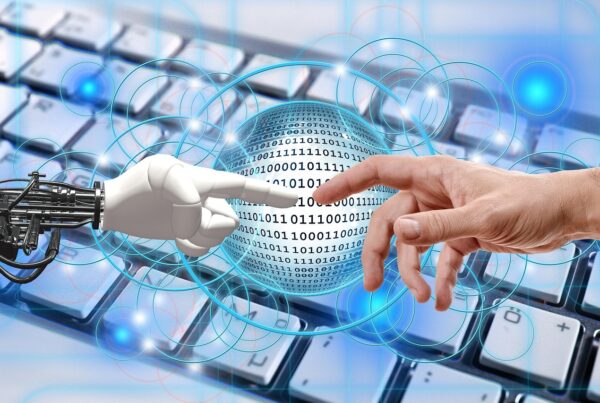AI@Work: Time to Get a Definition of AI?
The focus is starting to shift toward impact. Terms like big data, little data, machine learning, and deep learning are all a part of our language. Scientists aren’t just thinking about how AI works. Now it’s about how it can work for people. Marty the robot at the local grocery store roams the aisles asking to help locate products. Voices pop up on your smartphone. AI is here. The engineering part is being conquered. Now it is a question of a shared vision. What do we want AI to do? Can it help people? Will it reframe business processes? Everyone, not just technical people, needs to play a role in these decisions. AI is here and ready to solve problems for everyone. It affects all aspects of our lives.
AI is moving quickly, very quickly. It has taken on a life of its own. Anyone who is responsible for redundant and repetitive tasks is at risk of replacement. AI is about making decisions and judgments. Things that in the past were part of only the human domain. It is ripe with complexities, challenges, and potential. AI is taking on problems. It is discovering unrealized opportunities and identifying new actions. It can and will solve problems. It is finding its way into every nook and cranny of industry and every aspect of our lives.
AI has been on the horizon for decades. The challenges and fantasies surrounding AI include ideas from many disciplines. AI holds the promise of new possibilities. It offers infinite promise and a way of defining what it means to be human. In the mid-1940s, talks on the nature of intelligence laid the foundations for computer processing. Philosophers like Gottfried Wilhelm Leibniz and Blaise Pascal reflected on the design of intelligent machines. Jules Verne (Around the World in Eighty Days), Isaac Asimov (I, Robot), Frank Baum (The Wizard of Oz) and many others imagined smart machines. These machines were capable of interaction with human beings. They supported and challenged our deepest concerns on being human.
Most AI today, like it was in the 1960s, is based on natural language processing. Language was always thought to be the cornerstone of AI. Language is important because of the computer’s ability to store and retrieve huge amounts of verbal data. Slowly, understanding began to creep into the landscape. Language insight and translations have moved AI closer to providing humans with personal assistants. Knowledge-based systems have overtaken logic- based paradigms. Gradually, since the 1960s, MIT, IBM, CMU, Stanford and many other think tanks have helped move AI forward. Today, the AI community is thriving.
The term AI was established at the 1956 Dartmouth Conference on Artificial Intelligence. The AI discussion continues to unfold. When AI is described, at the core of intelligence is always the concept of continued learning. We don’t have one common definition that everyone agrees upon which makes it extremely difficult to regulate. Isn’t it time the AI community comes up with a definition? Over 70% of the workforce uses a personal assistant with some form of AI! But we can’t define what AI is? Really!!
#AI@Work, #WFH, #Virtual Touchpoints, #ThePajamaEffect, #The Visual Connection, #BobbeGB, #BobbeBaggio, #Touchpoints, #Remote Workplace, #WorkFromHome, #PJEffect, #LinkedInNewsLive





